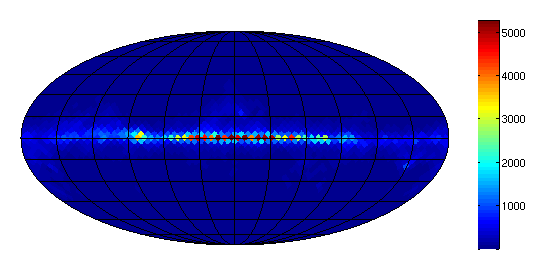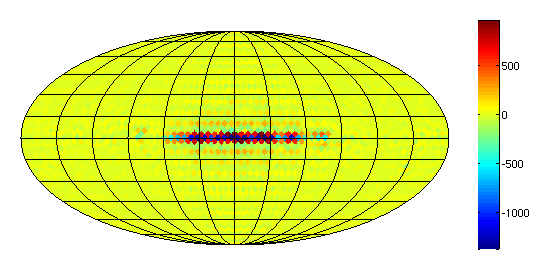Apr 20 2018, Clem Pryke
We wish to use PySM maps for PICO sims. (See [https://arxiv.org/abs/1608.02841 PySM paper] and [https://github.com/bthorne93/PySM_public git repo].)
PySM can be run at any nside up to 512. What it does internally when asked for <512 I have not investigated. I suspect it downgrades the templates with which it is working. It can also be told to smooth the output maps to a given beam size.
To be realistic we would generate PICO maps with the resolution varying by band as per imageroptions. However, it appears PySM applies the requested smoothing in harmonic space and, because the dynamic range of the foreground maps is large, such smoothing is problematic.
Here is the PySM map at 150 GHz for model a2d4f1s3 in T:
Now I turn on smoothing with 120 arcmin kernel and take the difference of smoothed minus unsmoothed:
We see severe artifacts which results from the harmonic space manipulation of a map which has bright galactic plane. The dynamic range is smaller in polarization but there is still a problem.
We need to decide how to deal with this. Some options
1) The galactic plane will always get masked in post analysis anyway - we could just pre-mask it before smoothing (this is what I did for CMB-S4 sims concerned only with small patch at high latitude. 2) We could do some preliminary nside=16 sims with no smoothing at all. 3) We could implement a map space smoothing which will not suffer from such artifacts.
There must be knowledge from Planck on how to deal with smoothing a map with large dynamic range - since this is true for the real maps?!

